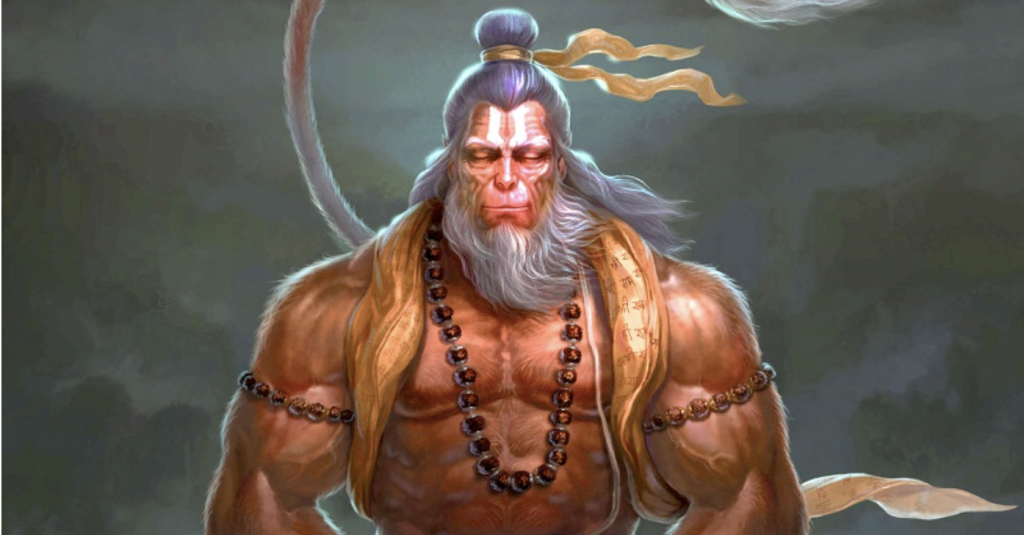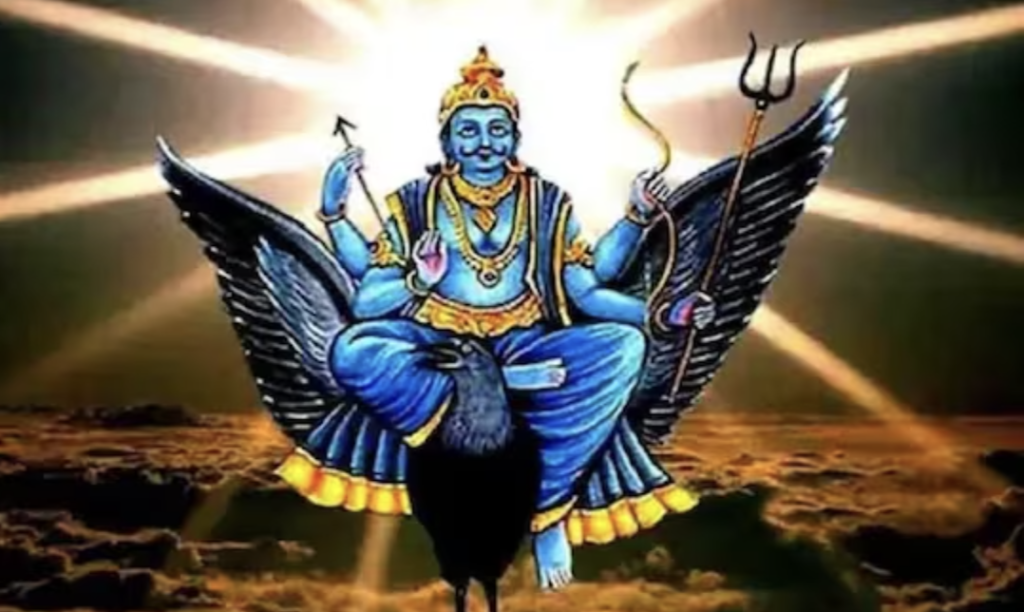
Hanuman chalisa in bengali -হনুমান্ চালীসা is a devotional hymn dedicated to Lord Hanuman. It was composed by the Indian poet Tulsidas in the 14th or 15th century CE. Tulsidas was a prominent saint and poet in the Bhakti movement, which emphasized devotion and love for God. He wrote the Hanuman Chalisa as part of his larger epic poem called the Ramcharitmanas, which narrates the life and deeds of Lord Rama. Here in this article, you can get Hanuman Chalisa in Bengali here.
The Hanuman Chalisa is written in Awadhi, a dialect of Hindi, but it has been translated into various languages including Bengali. The Bengali version of the Hanuman Chalisa retains the essence and meaning of the original composition while being adapted to suit the linguistic nuances of Bengali.
Hanuman chalisa in bengali-হনুমান্ চালীসা
The Hanuman Chalisa in bengali -হনুমান্ চালীসা holds great significance in Hinduism as it extols the virtues and qualities of Lord Hanuman. It is believed that reciting the Hanuman Chalisa can bring immense strength, courage, and protection to the devotee. The hymn also praises Hanuman’s devotion and loyalty to Lord Rama and highlights his role as a symbol of unwavering faith.
The Bengali version of the Hanuman Chalisa is widely recited by devotees in West Bengal, Bangladesh, and other Bengali-speaking regions. It is often chanted during religious ceremonies, festivals, or as a daily practice for spiritual upliftment.
হনুমান চালিসা /Hanuman chalisa in bengali -হনুমান্ চালীসা ওরিজিনাল (Hindi) সংস্করণের থেকে কি-রূপে পৃথক?
Hanuman chalisa in bengali -হনুমান্ চালীসা version of the Hanuman Chalisa is a translation of the original Hindi composition. It has been adapted to convey the same message and essence in the Bengali language. Hanuman Chalisa is available in many languages like Marathi, Tamil, and so on.
While the core content remains unchanged, there might be slight variations in the choice of words or poetic expressions due to linguistic differences between Hindi and Bengali. The translator aims to maintain the lyrical flow and devotional fervor while ensuring that it resonates with the Bengali-speaking audience.
The translation process involves carefully selecting words that capture the intended meaning without losing the essence of Tulsidas‘ original composition. The translator may also make adjustments to maintain rhyme or rhythm in accordance with Bengali literary conventions.
Despite these minor differences, both versions of the Hanuman Chalisa share the same spiritual significance and serve as a medium for devotees to connect with Lord Hanuman and seek his blessings.
In conclusion, the availability of the Hanuman Chalisa in the Bengali language provides a valuable resource for Indian speakers to connect with and deepen their devotion to Lord Hanuman. This translation allows individuals to understand and recite the powerful verses of the prayer in their native tongue, fostering a stronger spiritual connection and cultural identity.
Hanuman chalisa in bengali -হনুমান্ চালীসা
হনুমান্ চালীসা
দোহা
শ্রী গুরু চরণ সরোজ রজ নিজমন মুকুর সুধারি ।
বরণৌ রঘুবর বিমলযশ জো দাযক ফলচারি ॥
বুদ্ধিহীন তনুজানিকৈ সুমিরৌ পবন কুমার ।
বল বুদ্ধি বিদ্যা দেহু মোহি হরহু কলেশ বিকার ॥
ধ্যানম্
গোষ্পদীকৃত বারাশিং মশকীকৃত রাক্ষসম্ ।
রামাযণ মহামালা রত্নং বংদে-(অ)নিলাত্মজম্ ॥
যত্র যত্র রঘুনাথ কীর্তনং তত্র তত্র কৃতমস্তকাংজলিম্ ।
ভাষ্পবারি পরিপূর্ণ লোচনং মারুতিং নমত রাক্ষসাংতকম্ ॥
চৌপাঈ
জয হনুমান জ্ঞান গুণ সাগর ।
জয কপীশ তিহু লোক উজাগর ॥ 1 ॥
রামদূত অতুলিত বলধামা ।
অংজনি পুত্র পবনসুত নামা ॥ 2 ॥
মহাবীর বিক্রম বজরংগী ।
কুমতি নিবার সুমতি কে সংগী ॥3 ॥
কংচন বরণ বিরাজ সুবেশা ।
কানন কুংডল কুংচিত কেশা ॥ 4 ॥
হাথবজ্র ঔ ধ্বজা বিরাজৈ ।
কাংথে মূংজ জনেবূ সাজৈ ॥ 5॥
শংকর সুবন কেসরী নংদন ।
তেজ প্রতাপ মহাজগ বংদন ॥ 6 ॥
বিদ্যাবান গুণী অতি চাতুর ।
রাম কাজ করিবে কো আতুর ॥ 7 ॥
প্রভু চরিত্র সুনিবে কো রসিযা ।
রামলখন সীতা মন বসিযা ॥ 8॥
সূক্ষ্ম রূপধরি সিযহি দিখাবা ।
বিকট রূপধরি লংক জলাবা ॥ 9 ॥
ভীম রূপধরি অসুর সংহারে ।
রামচংদ্র কে কাজ সংবারে ॥ 10 ॥
লায সংজীবন লখন জিযাযে ।
শ্রী রঘুবীর হরষি উরলাযে ॥ 11 ॥
রঘুপতি কীন্হী বহুত বডাযী ।
তুম মম প্রিয ভরত সম ভাযী ॥ 12 ॥
সহস্র বদন তুম্হরো যশগাবৈ ।
অস কহি শ্রীপতি কংঠ লগাবৈ ॥ 13 ॥
সনকাদিক ব্রহ্মাদি মুনীশা ।
নারদ শারদ সহিত অহীশা ॥ 14 ॥
যম কুবের দিগপাল জহাং তে ।
কবি কোবিদ কহি সকে কহাং তে ॥ 15 ॥
তুম উপকার সুগ্রীবহি কীন্হা ।
রাম মিলায রাজপদ দীন্হা ॥ 16 ॥
তুম্হরো মংত্র বিভীষণ মানা ।
লংকেশ্বর ভযে সব জগ জানা ॥ 17 ॥
যুগ সহস্র যোজন পর ভানূ ।
লীল্যো তাহি মধুর ফল জানূ ॥ 18 ॥
প্রভু মুদ্রিকা মেলি মুখ মাহী ।
জলধি লাংঘি গযে অচরজ নাহী ॥ 19 ॥
দুর্গম কাজ জগত কে জেতে ।
সুগম অনুগ্রহ তুম্হরে তেতে ॥ 20 ॥
রাম দুআরে তুম রখবারে ।
হোত ন আজ্ঞা বিনু পৈসারে ॥ 21 ॥
সব সুখ লহৈ তুম্হারী শরণা ।
তুম রক্ষক কাহূ কো ডর না ॥ 22 ॥
আপন তেজ সম্হারো আপৈ ।
তীনোং লোক হাংক তে কাংপৈ ॥ 23 ॥
ভূত পিশাচ নিকট নহি আবৈ ।
মহবীর জব নাম সুনাবৈ ॥ 24 ॥
নাসৈ রোগ হরৈ সব পীরা ।
জপত নিরংতর হনুমত বীরা ॥ 25 ॥
সংকট সে হনুমান ছুডাবৈ ।
মন ক্রম বচন ধ্যান জো লাবৈ ॥ 26 ॥
সব পর রাম তপস্বী রাজা ।
তিনকে কাজ সকল তুম সাজা ॥ 27 ॥
ঔর মনোরধ জো কোযি লাবৈ ।
তাসু অমিত জীবন ফল পাবৈ ॥ 28 ॥
চারো যুগ প্রতাপ তুম্হারা ।
হৈ প্রসিদ্ধ জগত উজিযারা ॥ 29 ॥
সাধু সংত কে তুম রখবারে ।
অসুর নিকংদন রাম দুলারে ॥ 30 ॥
অষ্ঠসিদ্ধি নব নিধি কে দাতা ।
অস বর দীন্হ জানকী মাতা ॥ 31 ॥
রাম রসাযন তুম্হারে পাসা ।
সদা রহো রঘুপতি কে দাসা ॥ 32 ॥
তুম্হরে ভজন রামকো পাবৈ ।
জন্ম জন্ম কে দুখ বিসরাবৈ ॥ 33 ॥
অংত কাল রঘুপতি পুরজাযী ।
জহাং জন্ম হরিভক্ত কহাযী ॥ 34 ॥
ঔর দেবতা চিত্ত ন ধরযী ।
হনুমত সেযি সর্ব সুখ করযী ॥ 35 ॥
সংকট ক(হ)টৈ মিটৈ সব পীরা ।
জো সুমিরৈ হনুমত বল বীরা ॥ 36 ॥
জৈ জৈ জৈ হনুমান গোসাযী ।
কৃপা করহু গুরুদেব কী নাযী ॥ 37 ॥
জো শত বার পাঠ কর কোযী ।
ছূটহি বংদি মহা সুখ হোযী ॥ 38 ॥
জো যহ পডৈ হনুমান চালীসা ।
হোয সিদ্ধি সাখী গৌরীশা ॥ 39 ॥
তুলসীদাস সদা হরি চেরা ।
কীজৈ নাথ হৃদয মহ ডেরা ॥ 40 ॥
দোহা
পবন তনয সংকট হরণ – মংগল মূরতি রূপ্ ।
রাম লখন সীতা সহিত – হৃদয বসহু সুরভূপ্ ॥
সিযাবর রামচংদ্রকী জয । পবনসুত হনুমানকী জয । বোলো ভাযী সব সংতনকী জয ।

